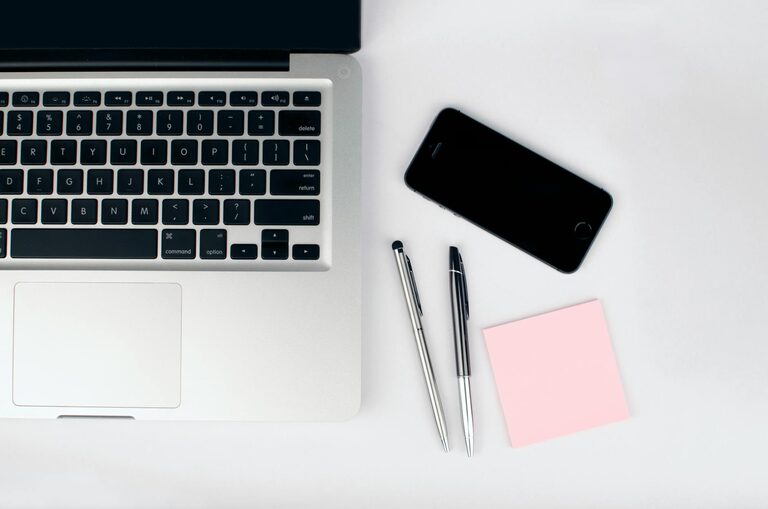How to Declutter Your Digital Life for More Focus and Efficiency

In today’s connected world, our digital devices are filled with emails, apps, files, and notifications. While these tools keep us productive and entertained, a cluttered digital space can lead to stress, distraction, and wasted time. Decluttering your digital life means organizing, simplifying, and reducing the noise so you can focus on what matters. In this post, we’ll explore practical steps to help you regain control and create a cleaner digital environment.
Why Declutter Your Digital Life?
Digital clutter can affect your productivity and mental clarity. When your screen is filled with countless folders, apps, and unread messages, it can be overwhelming. Decluttering helps you:
– Save time by finding files and information faster
– Reduce distractions from unnecessary notifications
– Improve your device’s performance
– Create a streamlined digital workspace
– Lower stress and increase focus
Let’s dive into simple strategies to tackle digital clutter effectively.
1. Organize Your Files and Folders
One of the most common sources of digital clutter is a disorganized file system. Over time, downloads, documents, images, and other files accumulate in random places.
Tips for File Organization
– Create a clear folder structure: Group files by categories like Work, Personal, Photos, or Projects. Keep folder names concise and consistent.
– Use subfolders wisely: Break down large categories into subfolders by date, event, or topic to make searching easier.
– Name your files descriptively: Use meaningful names including dates or content descriptions instead of generic titles like “Document1.”
– Delete unnecessary files: Periodically go through your files and delete duplicates, outdated versions, or things you no longer need.
– Use cloud storage: Platforms like Google Drive, OneDrive, or Dropbox help you save space and access files from anywhere.
2. Manage Your Email Inbox
An overflowing inbox is a major digital clutter source that drains time and energy.
Tips for Email Management
– Unsubscribe from unnecessary newsletters: Use tools or manually unsubscribe from emails you no longer read to reduce incoming messages.
– Create folders and filters: Automatically sort incoming mail into labeled folders (e.g., Important, Receipts, Social) to prioritize.
– Set a daily email routine: Check and process emails at designated times to avoid constant distractions.
– Archive or delete old emails: Keep only what you need and archive the rest for future reference.
– Use email search functions: Instead of scrolling endlessly, use keywords to find old messages quickly.
3. Streamline Your Apps and Software
Many devices get crowded with unused or rarely used apps, slowing down performance and cluttering your interface.
Tips to Manage Apps
– Audit your apps: Review all installed applications and uninstall those you haven’t used in the last few months.
– Group apps in folders: On your phone or tablet, group similar apps (e.g., Productivity, Social, Entertainment) for easy access.
– Limit app notifications: Disable non-essential notifications to reduce interruptions throughout your day.
– Update regularly: Keep your apps and software updated for security and better performance.
4. Declutter Your Browser
Web browsers can become cluttered with too many open tabs, saved passwords, and bookmarks.
Tips for Browser Decluttering
– Close unnecessary tabs: Use extensions or features that help manage multiple tabs or set limits to avoid overload.
– Organize bookmarks: Delete or group bookmarks into folders labeled by topic like Research, Shopping, or Recipes.
– Clear cache and cookies: Regularly clear browsing data to improve browser speed and protect your privacy.
– Use password managers: Instead of storing passwords in browsers, consider dedicated password manager tools for security and ease.
5. Control Digital Notifications
Constant pings from social media, messaging apps, and devices can overwhelm your attention.
Tips to Reduce Notifications
– Turn off non-essential alerts: Choose which apps can send notifications and silence the rest.
– Use Do Not Disturb modes: Activate this during focused work times or at night to avoid interruptions.
– Schedule specific times for checking social media: Avoid constant checking by setting limits to when and how often you engage.
– Mute group chats or channels: If certain conversations aren’t urgent, mute them to reduce noise.
6. Backup Important Data
Digital decluttering includes protecting your important files with backups.
Backup Tips
– Use automatic backups: Set your device to automatically back up data to cloud storage or external drives.
– Keep multiple backups: Store copies both locally and in the cloud to safeguard against loss or device failure.
– Review backups periodically: Make sure backups are current and accessible when needed.
7. Maintain Your Digital Space Regularly
Digital decluttering isn’t a one-time task. Regular upkeep ensures your space stays clean and efficient.
Suggested Maintenance Routine
– Schedule monthly or quarterly sessions to clean files and uninstall apps.
– Review your email subscriptions every few months.
– Reset browser bookmarks and clear cache as needed.
– Reflect on your digital habits and adjust tools accordingly.
Conclusion
Decluttering your digital life can make a big difference in how you work, relax, and connect online. By organizing files, managing emails, reducing apps, controlling notifications, and maintaining your space, you’ll enjoy a clearer, faster, and more focused digital experience. Start small with one area and gradually build sustainable habits for lasting results. You might be surprised at how much calmer and productive you feel with a tidier digital environment!
